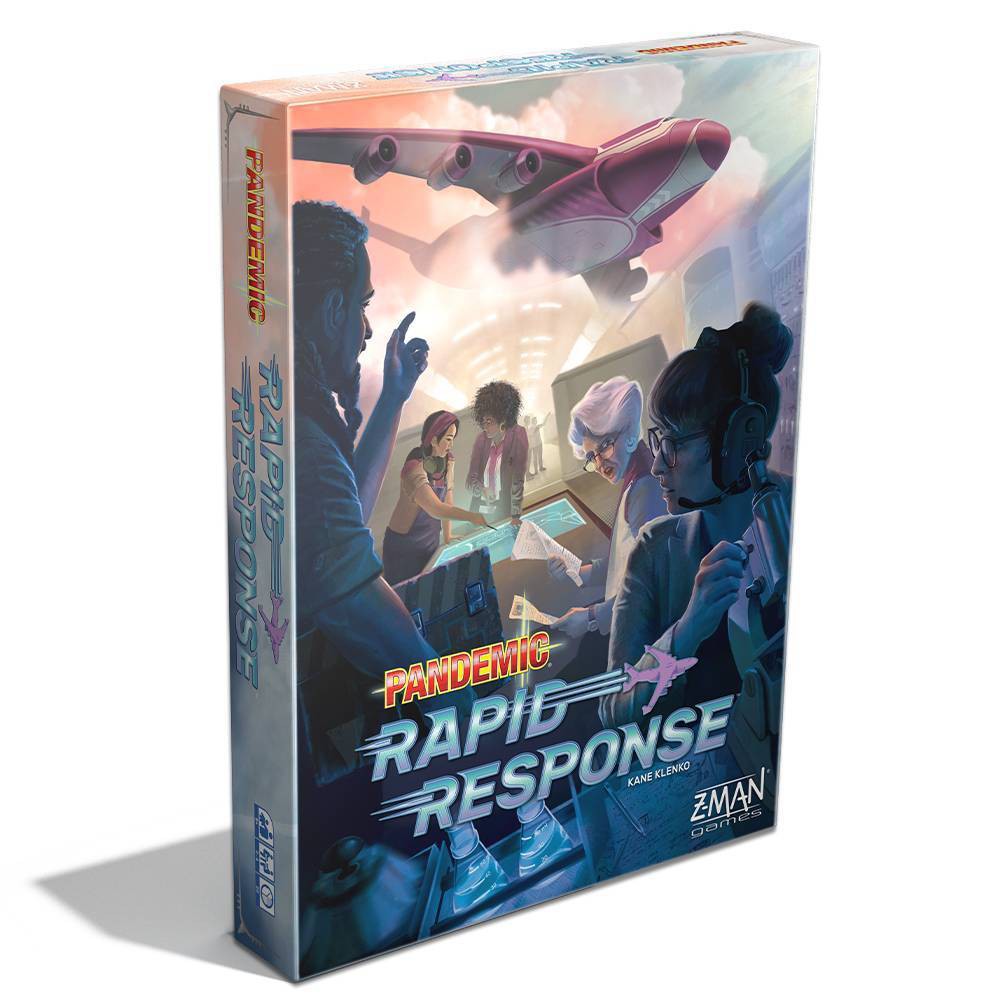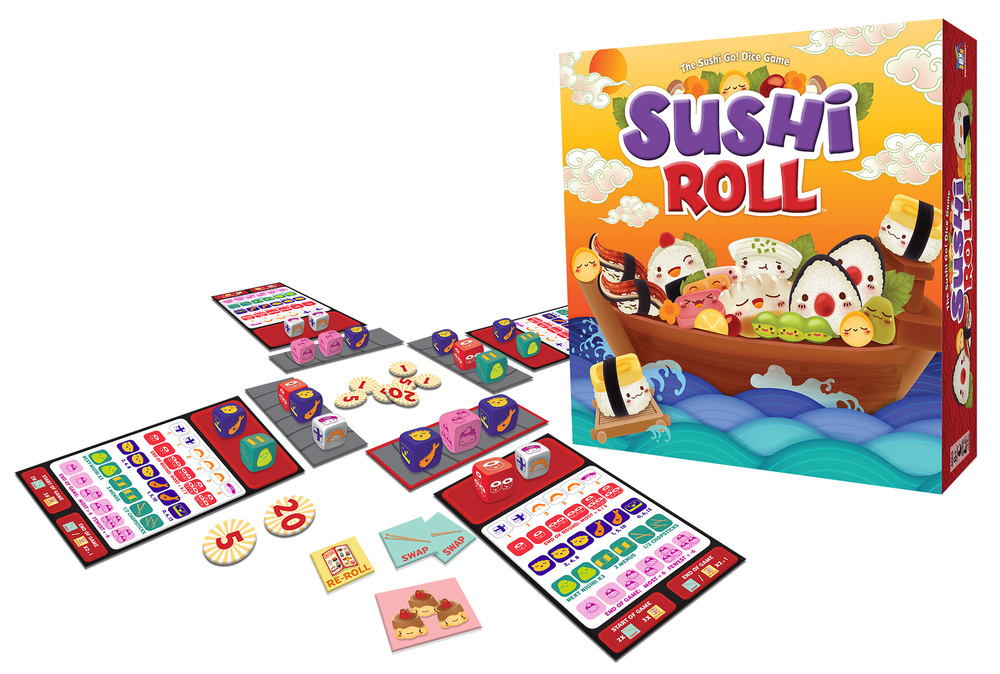Pandemic Rapid Response is the latest brand extension to the Pandemic cooperative game franchise, which now includes the two Legacy seasons and multiple spinoffs in specific geographies, but all of which adhere more or less to the original game’s mechanics. This one, however, is a completely new game with the Pandemic theme pasted on to it, adding a real-time element and a lot of dice rolling, removing all of the path-finding aspects of the original and creating a more tenuous connection between the game play and the theme itself. It’s available exclusively at Target.
In Rapid Response, two to four players play crew members on a plane that brings emergency supplies to the worst-affected cities in a global outbreak. There are five types of supplies, represented by four cubes each of five colors in separate rooms on the plane, and a track of cities around the outside of the board with a plane token to move around it. In the most basic version of the game, you start with two cities already asking for help, which means they need four or occasionally five supply cubes in a specific combination, and you must gather those supplies from around the ship in a convoluted fashion so you can deliver them from the cargo bay. You start with three ‘time tokens,’ and lose one each time the hourglass runs out, at which point you also unveil another city card that is requesting assistance – three more, in total, in the starter version. The hourglass runs long enough for multiple player turns, but you have to move quickly and make split-second decisions. When you deliver to a city, you remove that card and gain one more time token; if you run out of time tokens at any point, however, you lose the game.
Each player has six dice that show various symbols on the six sides – the five supply types as well as an airplane symbol. You start your turn by rolling all of your dice, and then you may reroll any or all dice up to two more times at any time during your turn. You can spend any die, regardless of face value, to move to an adjacent room on the plane. You can spend a die with a plane symbol to move the plane one city in either direction. If you’re in a room and have dice with the matching supply symbol, you can place those dice on the room’s track; once you get at least four dice (it varies by room), you can ‘activate’ the room, take the displayed number of cubes, and then roll all of those dice to see how much ‘waste’ you generated, based on how many circled symbols you get on the roll. You then move up the waste track in the recycling room, which goes from 0 to 10; if it exceeds 10, you lose the game as well. You take your cubes and move them to the cargo bay, which holds up to ten cubes until you deliver some.
You can deliver goods by moving to the cargo bay and using one die with a plane symbol to activate it, after which you return those goods to their original supply rooms. You can also deal with the excess waste by going to the recycling room and placing up to five dice on that room’s track, losing them for the rest of the turn but moving the track marker back up to four spaces.
Each player has a unique role, as in the original Pandemic, that gives you some small but useful benefit, such as getting to move the plane 1 or 2 spaces per die, or letting you roll one fewer die for waste when you activate a room. One role lets you reroll up to two more times, for a total of five, which I think is the most useful of all, although I am not quite sure of that after just a few plays.
You can increase the game’s difficulty by using more city cards both at the start and in the mini-deck you’ll use during the game each time the hourglass is emptied; or by using the Crisis cards, which just throw more obstacles in your path, like the ones that sit atop already-played city cards and require you to deliver one specific cube to satisfy the crisis card first before you can make a second delivery to complete the city card. I don’t think they’re necessary, but they do add another wrinkle to the game.
The challenge is already pretty difficult, and I think you should be prepared to bark a lot of orders or “suggestions” at each other while you play because your time is so limited. You start the time, the first player rolls, does a few things, rolls the remaining dice, tries to do something else, maybe rolls a third time, stops, and the second player has to jump in immediately to start their turn. It’s a frenetic experience, which isn’t everyone’s cup of tea, but it’s a big switch from Pandemic, which is also very tense but draws it from the game itself rather than a timer. Pandemic Rapid Response plays two to four players but is definitely better with more; you need the advantage of more pawns moving around the ship to be more efficient with your deliveries. It’s also the shortest Pandemic game by playing time; the box promises 20 minutes and I think that’s accurate once you get the rhythm down, although before that, the games might be shorter because you lose so quickly.






